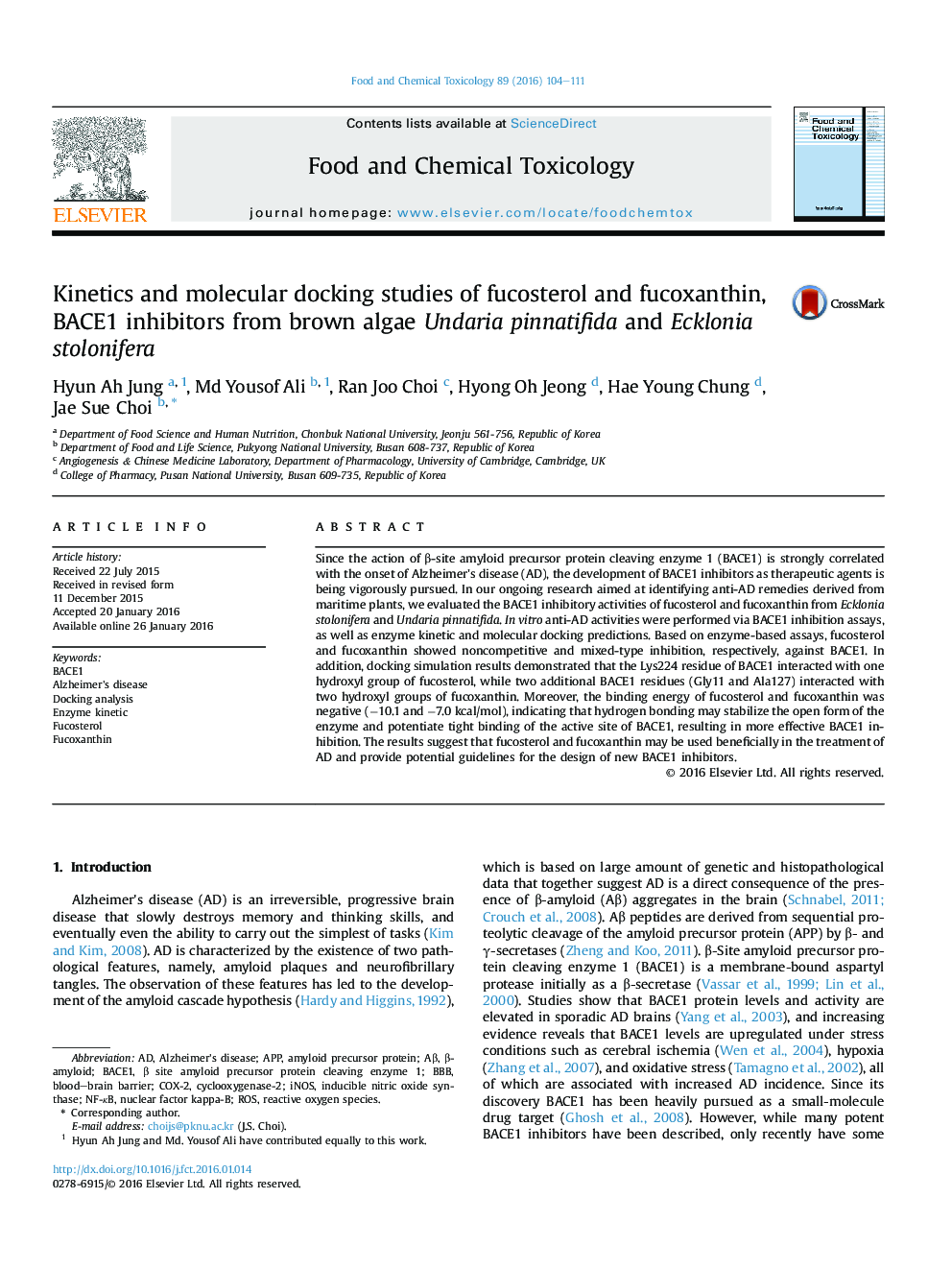| کد مقاله | کد نشریه | سال انتشار | مقاله انگلیسی | نسخه تمام متن |
|---|---|---|---|---|
| 5849485 | 1561755 | 2016 | 8 صفحه PDF | دانلود رایگان |

- Enzyme kinetic and docking simulation studies were simultaneously performed.
- Fucosterol showed noncompetitive inhibition against BACE1 enzyme.
- Fucoxanthin showed mixed-type inhibition against BACE1 enzyme.
- Amino acid residues on BACE1 interacted with functional groups of two compounds.
- Two compounds as BACE1 inhibitors may be used in the treatment of AD.
Since the action of β-site amyloid precursor protein cleaving enzyme 1 (BACE1) is strongly correlated with the onset of Alzheimer's disease (AD), the development of BACE1 inhibitors as therapeutic agents is being vigorously pursued. In our ongoing research aimed at identifying anti-AD remedies derived from maritime plants, we evaluated the BACE1 inhibitory activities of fucosterol and fucoxanthin from Ecklonia stolonifera and Undaria pinnatifida. In vitro anti-AD activities were performed via BACE1 inhibition assays, as well as enzyme kinetic and molecular docking predictions. Based on enzyme-based assays, fucosterol and fucoxanthin showed noncompetitive and mixed-type inhibition, respectively, against BACE1. In addition, docking simulation results demonstrated that the Lys224 residue of BACE1 interacted with one hydroxyl group of fucosterol, while two additional BACE1 residues (Gly11 and Ala127) interacted with two hydroxyl groups of fucoxanthin. Moreover, the binding energy of fucosterol and fucoxanthin was negative (â10.1 and â7.0 kcal/mol), indicating that hydrogen bonding may stabilize the open form of the enzyme and potentiate tight binding of the active site of BACE1, resulting in more effective BACE1 inhibition. The results suggest that fucosterol and fucoxanthin may be used beneficially in the treatment of AD and provide potential guidelines for the design of new BACE1 inhibitors.
Journal: Food and Chemical Toxicology - Volume 89, March 2016, Pages 104-111